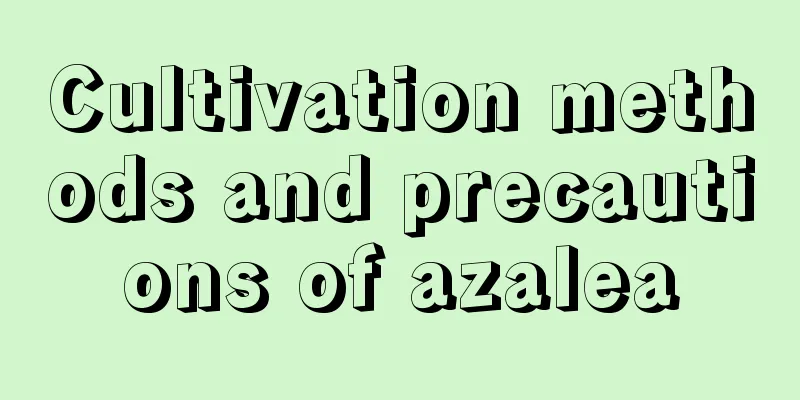Methods and skills for beginners to grow succulents (beginner knowledge and tutorials on growing succulents)

There are some tips for getting started quickly with growing succulents:As the saying goes, "the layman sees the excitement, the expert sees the doorway", the same is true for growing succulents. Learning some tips on soil preparation, growth habits, daily maintenance, etc. in advance can help you avoid many detours. Moreover, now that the Internet platform is so developed, there are many ways to gain relevant experience. If you learn about it in your spare time, you can accumulate a lot of relevant knowledge, which will be more or less helpful for raising succulents! Put the knowledge you have learned into practice in life, and over time, you can learn it without a teacher. Learning these is the beginning of growing succulents① Have a basic understanding of growth habits: At least you should know when growing succulents: most succulents like sunlight and are drought-resistant. Lack of sunlight and excessive watering will easily cause them to grow too tall, fade, and spread out. It is not tolerant to extreme heat or cold, and it will go dormant for a short time during the high temperature period in summer. The winter temperature should not be below zero for a long time. The main propagation methods are leaf cutting, branch cutting, beheading, and division. ②. Keep ventilation A well-ventilated and breathable environment is very important for the growth of succulents. If they are kept in a tight environment for a long time, the plants will wilt and become listless. Maintaining a well-ventilated and breathable environment will allow the plants to grow vigorously and prevent the occurrence of diseases and pests. ③. Suitable temperature Succulents like to grow in an environment of 15-25 degrees Celsius. Temperatures that are too high or too low will affect the growth of the plants, but occasional low temperatures can also promote the coloring of the plants and provide an environment with a large temperature difference between day and night, which will make the coloring more beautiful. ④. Adequate sunlight Succulents are light-loving plants. If they are exposed to more sunlight, the plants will be more beautiful and grow stronger. However, they need proper shade in the hot summer to prevent the leaves from being burned in strong light. ⑤Can be potted correctly: Correct potting includes: choosing a suitable growing medium, small-scale root pruning, and maintenance during the acclimatization period. When cultivating succulents, you should try to use granular soil that is loose and breathable and contains a certain proportion of mineral particles. You can also use general nutrient soil or sandy loam, but the coloring effect is not as good as granular soil. Before potting, clean up the dead leaves at the bottom of the rosette, trim the rotten roots and fibrous roots appropriately, and soak it in a solution of carbendazim. This will help prevent the spread of pests and diseases and avoid cross infection. After potting, pour a small amount of water to help the roots settle, and place it in a diffuse light environment to acclimate. ⑥. Water appropriately The leaves of succulents are thick and relatively drought-resistant. There is no accurate watering cycle. The amount of watering varies depending on the light, growth environment, temperature, and potting soil. If you don’t know how to adjust it, generally when the leaves become soft, it means they are lacking water and need to be replenished with water in time. After watering, keep the environment ventilated and breathable to evaporate excess water. Water the plants less during the dormant period. ⑦ Know some pest control techniques: Succulents have more diseases and pests than ordinary potted plants, especially in the high temperature and high humidity environment in summer. They are prone to black rot and leaf loss, and are particularly susceptible to scale insects when seasons change. In addition, sooty mold and powdery mildew are also common in succulents. It is not necessary to know every disease, but at least you should be able to tell when to use pesticides and when to use fungicides. When you first start growing succulents, you can prepare some carbendazim and imidacloprid at home, use carbendazim for fungicides and imidacloprid for insecticides. |
<<: How to make the spider plant bloom (how to make the spider plant pot grow more vigorously)
Recommend
How many soft-shelled turtles can be raised per acre?
Soft- shelled turtle , also known as water fish a...
What to do if the leaves of dragon blood tree turn yellow
1. Increase lighting: Reason: Dracaena prefers su...
What kind of flowerpot looks good for violets?
What kind of flowerpot is suitable for violets? W...
Watermelon planting methods and management methods
Watermelon is loved by people for its sweet taste...
When is the best time to plant Buddha’s hand yam?
Buddha's hand yam , as the name suggests, is ...
The relationship between Ji Qiuli and Ji Longyue
Morphological Overview Ji Qiuli Crassulaceae is a...
How to propagate roses and what to pay attention to
How to propagate roses The main ways of rose prop...
Jasmine grafting method
Jasmine can be grafted. The grafting period is us...
Keep these 15 kinds of flowers at home to keep you cool and relieve the heat, and you don’t even need to turn on the air conditioner!
Blue Snowflake The name of blue snow flower gives...
How long does it take for carnations to bloom? How long does it take for carnation seedlings to bloom?
How long does it take for carnations to bloom? It...
There are 18 rare fruits in the world, only 1% of people have seen them, and those who have eaten them are definitely rich people!
Gubuasu Gubuasu looks like a dwarf version of ban...
Is cat's eye arrowroot poisonous?
Is cat's eye arrowroot poisonous? During the ...
Is pumpkin a squash? What is the difference between squash and pumpkin?
1. The difference between pumpkin and squash Acco...
What to do when a maiden's heart becomes soft and wrinkled
Causes and solutions: Lack of water First of all,...
How to remedy the root rot of money tree? Is it okay to not change the soil?
1. Loosen the soil and remove the pot The first t...









